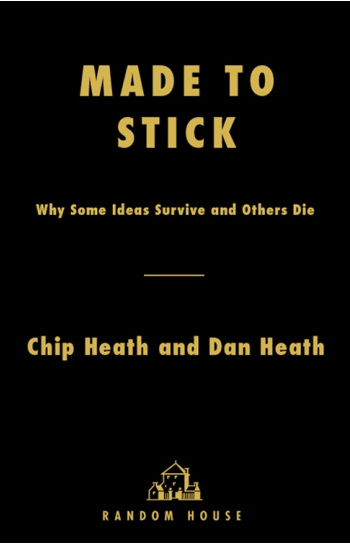موضوعات
آموزش و پرورش
ادبیات و زبان
پزشکی، دندانپزشکی و داروسازی
تاریخ و جغرافیا
داستان و رمان
دیگر
دین و فلسفه
روانشناسی
ریاضیات و آمار
سلامتی، تناسب اندام و رژیم غذایی
شیمی و پلیمر
علوم اجتماعی و حقوق
علوم زیستی و بیوتکنولوژی
فیزیک و نجوم
کامپیوتر و اینترنت
کتابهای کودکان و داستان
کسب و کار و اقتصاد
کشاورزی و دامپزشکی و غذا
معماری
مهندسی و فناوری
هنر و تئاتر
محصولات
Getting Yours: It's Not Too Late to Have the Wealth You Want - PDF
نویسندگان: خلاصه: "Believe it or not, you won’t want to put this book down once you get started. That’s rare for a book on investing, but this one’s a gem." –Ed McVey, Chairman, Templeton Private Group "I’ve known Bambi for many years and have read and enjoyed her first two books, but Getting Yours is the best yet! She inspires her readers to take easy steps to achieve their financial goals. I highly recommend this book to beginners and investment pros alike." –Victor Norton, Principal, Managing Director of Advisory Services, Kayne Anderson Rudnick "Finally, a book on personal finance that’s fun to read! I’m buying copies for all my friends and family–it’s that good!" –Gloria Mayer, President, Institute for Healthcare Advancement Coauthor, Goldilocks on ManagementHandbook of Hope Theory, Measures, & Applications - PDF
نویسندگان: خلاصه: This Handbook of Hope simply would not have happened without a small army of graduate students who, over the past decade, have come into my office one by one and suggested yetanother angle from which we could view hope. In that sense, what has come to be called hope theory has been like a gemstone that, when held to the light, sends shimmers of ideas about yet other possible implications or experiments. I have produced previous theories about reactions to personal feedback, uniqueness seeking, excuse making, and reality negotiation, hue none of chose have continued co produce the sufficiently intriguing questions to get me revved up for yet another experiment. Hope theory has been a great energizer at a time in my life when I have needed it. For the past seven years I have had a severe, unrelenting, and undiagnosed chest pain that is with me from my fim waking moments to the time th.at I slip off into sleep. Although I have been taking powerful pain killers, I think that none of those pills matches the positive effects of my getting lost in theory and research and work- ing with my students. At age 55 (by the time this book is published), I still enjoy the theory and bench science to the same degree that I did as a brand new 27-year- old assistant professor here at Kansas. And so, I have much for which to be th:.ink- ful.Internal Family Systems Therapy: Supervision and Consultation - Original PDF
نویسندگان: خلاصه: Internal Family Systems Therapy: Supervision and Consultation showcases the skills of Richard C. Schwartz and other leading IFS consultants and supervisors. Using unique case material, models, and diagrams, each contributor illustrates IFS techniques that assist clinicians in unblending and accessing Self-energy and Self-leadership. The book features examples of clinical work with issues such as bias, faith, sexuality, and sexual hurts. Individual chapters focus on therapist groups, such as Black Therapists Rock, and on work with specific populations, including children and their caregivers, veterans, eating disordered clients, therapists with serious illnesses, and couples. This thought-provoking book offers an opportunity for readers to reflect on their own supervision and consultation (both the giving and receiving of it). It explores what is possible and preferable at different stages of development when using the IFS model.Developing Anti-Racist Practices in the Helping Professions: Inclusive Theory, Pedagogy, and Application - Original PDF
نویسندگان: خلاصه: Offers a much-needed new paradigm for an anti-racist approach in the helping professions Brings together theories and practices that can help professionals foster anti-racism Models an interprofessional approach to anti-racist theoryMade to Stick: Why Some Ideas Survive and Others Die - PDF
نویسندگان: خلاصه: This is a crash course on how to make your ideas understood and remembered by other people. Whether you want to write a book, sell a product, or become a better storyteller, you’ll learn a useful playbook for understanding what makes an idea good and how to cement it into the mind of others. Key Takeaways Making ideas stick To make ideas stick, you can leverage the SUCCESs framework: Simplicity – makes something understandable Unexpectedness – makes people pay attention Concreteness – makes people understand and remember Credibility – makes people agree and believe Emotional – Makes people care Story – Inspires people to act The book is organized around understanding each of these six pillars of making ideas stick. 1. Simplicity Find the core idea Sticky ideas must be simple. Simplicity means you have found the core of the idea. You have stripped an idea down to its critical essence. For example, Southwest Airlines prioritizes one mission above all else: “We are the low-fare airline.” The mission is clear and simple enough to guide employee decisions. Don’t bury the lead Start with the most important idea. Journalists are taught early on not to “bury the lead.” The same is true for conveying your core idea. Whether you’re giving a talk, writing copy for a landing page, or sharing a story, start with the lead. That means getting rid of the fluff and centralizing around the core idea. What’s a simple idea? “Short sentences (compact) drawn from long experience (core). We are right to be skeptical of sound bites, because lots of sound bites are empty or misleading—they’re compact without being core. But the Simple we’re chasing isn’t a sound bite, it’s a proverb: compact and core.” Say one thing instead of three “When you say three things, you say nothing. When your remote control has fifty buttons, you can’t change the channel anymore.” Even if you have four good points, it’s better to focus on the one that matters most. Cutting the fat sometimes means cutting good ideas. Use familiar concepts and schemas Describe something in terms of a concept that’s already familiar. For example, imagine you wanted to explain what a pomelo was to someone who didn’t know. “Explanation 1: A pomelo is the largest citrus fruit. The rind is very thick but soft and easy to peel away. The resulting fruit has a light yellow to coral pink flesh and can vary from juicy to slightly dry and from seductively spicy-sweet to tangy and tart.” “Explanation 2: A pomelo is basically a supersized grapefruit with a very thick and soft rind.” Explanation 2 wins because most people are familiar with a grapefruit, and that familiarity can allow them to more easily grasp what a pomelo is. Great teachers use schemas that people are familiar with: “Good teachers intuitively use lots of schemas. Economics teachers, for instance, start with compact, stripped-down examples that can be understood by students who have no preexisting economics schemas. “Let’s say that you grow apples and I grow oranges. We’re the only two people around. Let’s also say that we’d prefer to eat some of both fruits rather than all of either. Should we trade? If so, how do we go about doing it?” Avoid the curse of knowledge “Once we know something, we find it hard to imagine what it was like not to know it. Our knowledge has “cursed” us. And it becomes difficult for us to share our knowledge with others, because we can’t readily re-create our listeners’ state of mind.” You know you’re suffering from the curse of knowledge when you want to be accurate to the point where most people don’t understand. It’s better to break down things into simple terms so that more people can grasp what you’re saying than to get all of the precise details correct for someone who is not an expert. How to pitch It’s more effective to use things people are already familiar with. For example, you’re new company is the “Uber for x” or your new movie is “Jaws on a spaceship.” People can quickly grasp what it is you’re trying to do and not be bogged down by all the nuances of the project. 2. Unexpectedness A core challenge of communicating your ideas is getting people’s attention, especially if you’re not already famous or known as a highly credible source in a particular field. Unexpectedness can help. Break a pattern “The most basic way to get someone’s attention is this: Break a pattern. Humans adapt incredibly quickly to consistent patterns. Consistent sensory stimulation makes us tune out.” For example, think about how you feel when airlines begin reviewing safety information about life jackets, oxygen masks, and so on. You probably tune out because it’s boring and familiar. But if a safety instructor started making jokes and broke the script, that might actually get your attention. It’s unexpected, and all of a sudden you’re listening to something that you would have otherwise ignored. Power of surprise “So if emotions have biological purposes, then what is the biological purpose of surprise? Surprise jolts us to attention. Surprise is triggered when our schemas fail, and it prepares us to understand why the failure occurred.” Breaking a pattern can help get people’s attention by surprising them, but you also need to figure out how to keep their attention. For example, a clickbait headline may be useful in getting people to view your article, but it won’t ensure that people read the full piece. If they don’t read the piece, then what’s the point? You may increase your pageviews, but you don’t increase your influence. Power of mystery “Curiosity is the intellectual need to answer questions and close open patterns. Story plays to this universal desire by doing the opposite, posing questions and opening situations.” A mystery story draws people in. It incites curiosity and gets them wondering about the answer. Beginning with a mystery story can get the audience bought into the puzzle that you’d like to solve with them. People want to know: “What will happen next? How will it turn out?” That’s what keeps them invested in the story. You create a mystery by first opening gaps. Those gaps should make the audience want to know what happens next. A good mystery is only useful if the person reading about it wants to know what happens next. You can then close the gaps via the story. An important part of closing the gap is how you sequence information. A good story drops clues incrementally, keeping the reader hooked. 3. Concreteness Telling concrete stories that reveal deep truths is a more powerful way to share a message than listing out an abstracted truth. A good example is “The Fox and the Grapes” by Aesop. One hot summer day a Fox was strolling through an orchard. He saw a bunch of Grapes ripening high on a grape vine. “Just the thing to quench my thirst,” he said. Backing up a few paces, he took a run and jumped at the grapes, just missing. Turning around again, he ran faster and jumped again. Still a miss. Again and again he jumped, until at last he gave up out of exhaustion. Walking away with his nose in the air, he said: “I am sure they are sour.” It is easy to despise what you can’t get. We can all relate to and remember this story, and it has more meaning than if someone just said, “It is easy to despise what you can’t get.” The concrete details of the fable bring meaning to a common blunder of the human psyche. Abstraction “Abstraction is the luxury of the expert.” Experts often share ideas in complicated terms that only fellow experts can understand. They are plagued by the Curse of Knowledge and want to show how informed they are about a topic. But this type of abstraction is unhelpful to a novice. It clouds the message that is being shared to the point that it is never understood. Concrete language, including vivid and digestible details, can help bridge this gap. In part, that’s because concrete words are more memorable than abstracted ones. If I wanted to teach you about accounting, for example, I could talk about income statements, balance sheets, and accounts receivable. Or, I could ask you to help figure out if two students selling a product online have a feasible business idea. The specific example of students (who are like you) can help you put the abstracted concepts into practice in a way that can make them tangible and digestible. The result is that you learn about the core concepts of accounting without having to study a dictionary of confusing terms. 4. Credibility Credibility is an important part of making an idea stick, but how do you establish credibility? There are a few ways – statistics are one of them. Using statistics effectively “Statistics are rarely meaningful in and of themselves. Statistics will, and should, almost always be used to illustrate a relationship. It’s more important for people to remember the relationship than the number.” Let’s say you wanted to talk about the importance of employee dissatisfaction in your workforce. You could site a number of statistics: Only 25% of people say they have a clear understanding of their job Only 15% of people were enthusiastic about their job Only 30% of people say they have enough resources to execute key goals These statistics are helpful, but they are still very abstract. You might come away feeling that there is a lot of dissatisfaction at the company, but no idea of how serious this issue may be. A more useful way to describe what’s going on is to compare the numbers to something people have a grasp of. Drawing from an example in Steven Covey’s book, you could say something like: “If your workforce was a soccer team, only 4 out of 11 players would know which goal is theirs. Only 2 out of 11 would care. Only 2 of the 11 know what position they play and know exactly what they are supposed to do. And all but two players would, in some way, be competing against their own team members rather than the opponent.” By humanizing the statistics in this way, it’s easy to understand that something needs to be fixed. In fact, it would seem ridiculous if an organization didn’t figure out how to change things quickly. Another example is evaluating whether or not you should make an investment. You could say, “The cost of making this investment would be about $500 per employee annually.” In these terms, you need to figure out if the benefit of the investment is more than $500. One way that you can frame the “Is it worth it?” question is to say: “If you believe you can increase an employee’s productivity by one to two minutes a day, you’ve paid back the cost of the investment.” That makes the investment a no-brainer, versus an abstracted cost/benefit calculation does not. Sinatra Test One way to establish credibility is to leverage the Sinatra Test: If you can make it there, you can make it anywhere. This is particularly useful for small or unproven businesses. The idea is that you prove yourself with a big and important customer under difficult circumstances, and that action alone gives people confidence that you can do that for many more people. “We made sure that all Amazon deliveries arrived on time during Christmas” is a much more powerful signal to other potential customers than “98% of our deliveries arrive on time.” 5. Emotional “If I look at a mass, I will never act. If I look at the one, I will.” – Mother Teresa If I tell you that 5 million African children die of malaria every year, you will likely feel bad about the problem. But how motivated will you be to act? It’s hard to conceptualize 5 million people in suffering, and you may feel like whatever you do will be an unhelpful drop in the bucket. If, on the other hand, I tell you that Rhonda, a young girl in Africa may die from a preventable disease, and all you need to do is donate $50 annually to save her life, that’s a no-brainer. You’re going to be much more likely to donate to the cause and feel. like you’re doing something really meaningful. Charities have tapped into this quirk of human psychology by sharing the stories of individual people who are suffering from things that impact large numbers of people. The individual story taps into our emotions in ways that large and scary numbers don’t. Creating an emotional response inspires people to act. In the case of charities, sharing single detailed stories of specific individuals leads to more donations and impact. Semantic stretch When we overuse a term that generates an emotional response, it leads to a dampening of the emotional response. For example, let’s say we see artsy people that like to buck societal norms and call them “hipsters.” That word has meaning and gives us the feeling of what a hipster is and represents. But as the term gets adopted more widely, we start calling more and more things “hipster.” Suddenly, all modern designs or people wearing specific types of clothing are hipster. Or maybe even bucking a societal trend in and of itself is “hipster.” Over time, as the word expands to describe many more things than the original meaning, it loses its emotional resonance because it’s been overused. This concept is caused semantic stretch. Leveraging self-interest People care about themselves and what they want. So if you’re writing copy, it can be useful to put it in terms that highlight the ways in which an individual may benefit. Often, it’s helpful to give people a way to visualize the value of what you’re offering. The tangibility of your visualization, rather than the magnitude of the change you’re promising, can lead to the most action. Maslow’s Pyramid Tapping into people’s self-interest is useful, but people have a wide range of needs. Depending on what you’re offering, you may want to tap into the wider set of their needs. Maslow’s Pyramid is a good framework for understanding the full range of what people may care about: Transcendence: help others realize their potential Self-actualization: realize our own potential, self-fulfillment, peak experiences Aesthetic: symmetry, order, beauty, balance Learning: know, understand, mentally connect Esteem: achieve, be competent, gain approval, independence, status Belonging: love, family, friends, affection Security: protection, safety, stability Physical: hunger, thirst, bodily comfort To create an emotional response, you can convey value in terms of some of these needs. 6. Story Mental simulation If you ask someone to think about a certain future to simulate a problem they need to solve, they will often come up with a more vivid and accurate understanding of the situation. They will see things that they otherwise ignored in an abstracted planning process. For example, imagine you quit drinking, and you were worried about a party with friends coming up. Instead of arriving at the party sober and hoping that your self-control could win out, you could visualize the event. Visualize the subtle peer pressures you might face and what you could do in that situation. If you do that, you’re more likely to be prepared and comfortable with this potentially challenging social situation. Jared at Subway The story of Jared, the guy who lost hundreds of pounds eating Subway sandwiches, lead to massive growth for the Subway chain. It took a savvy and persistent group of people who first spotted and then believed in the story before the company decided to feature it, but it ended up being one of the most successful stories for fast-food sales growth than any other. Instead of “Subway has low-fat sandwiches,” people saw that “Jared, an everyday guy, lost a ton of weight by eating Subway every day.” That story had a lot more staying power than a description of the nutritional properties of the sandwiches. Common story plots You can leverage various types of common stories. Challenge Plot: Someone overcomes a formidable challenge and succeeds (e.g., David and Goliath). Connection Plot: People who develop a relationship that bridges a gap – racial, class, ethnic, religious, demographic, etc. (e.g., everyone drinks Coca Cola) Creativity Plot: Someone makes a mental breakthrough, solving a hard puzzle, or finding an innovative solution to a problem . Stories are particularly effective in dismantling the Curse of Knowledge. By sharing a simple and concrete story that people can relate to, you can move away from abstracted lessons and move toward a narrative that people can follow and take away something valuable.آیا کتاب مورد نظر هنوز بر روی سایت قرار نگرفته است؟ جای نگرانی نیست! کافی است بر روی گزینه سفارش کتاب کلیک کرده و درخواست خود را ثبت کنید. در کمتر از چند ساعت کتاب شما را آماده خواهیم کرد.









